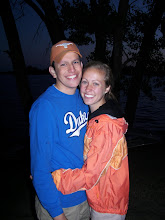
This experience of blogging my reflections on the coursework in ERM got me thinking that there may be an upside to blogging that I have since ignored in exchange for sharing the sentiments of those who claim: “Blogs: never have so many had so much to say about so little to so few.” :) I used to see blogs as online diaries, I guess, which feels extremely invasive for someone like myself who does as little Facebook updating, Twittering, and whatever other modern social networking is available in an attempt to avoid advertising myself for future generations’ entertainment and study. However, this class found me looking forward to blogging as a medium by which I felt like I could synthesized the readings for class after having digested them and listened to discussions and lectures in class. Being able to post my thoughts about things here helped keep me accountable to intentional reflection on coursework.
Also, more directly related to this class, an interesting element of my blogging that I grew in was the pictures I attach to each entry. Prior to this course and in other projects, I would simply Google images and put them up, or search in Wikimedia and post them without attribution (guilty as charged – but I’ve gone back and added attribution now!). However, I am now paying much more attention to the licensing information on the Wikimedia licenses for each different photo and website, and am much more interested in the concept of Creative Commons licensing. At first I was a lot more paranoid and let it almost affect my “creative thought and growth” in constant fear of trying to avoid potholes of copyright trouble, like a little minefield where copyright infringement could explode at any second.
So on the whole, my thinking about ERM has changed in the following ways:
- Copyright is not as scary/frightening/overwhelming/ominous. Take your pick.
- I understand people’s concern with wanting to protect their stuff through copyright, though there are instances of copyright that still surprise me.
- Overall, I have a bigger picture perspective on things like click through licenses, disclaimers, and getting electronic access to journal articles.
- I actually like looking up license and terms of use agreements on the databases I’m using at school. And know how to read them.
- I am up to speed on the real-life issues facing libraries with ERM, such as Georgia State, and the initiatives currently in the works that seek to further advance this area of the field.
- I see how standards are a good thing, especially in LibraryLand, because without them things get very complicated.
- I know how to look for supplemental information regarding licensing, copyright, and e-resource management, and I’m familiar with the foundational concepts and terms used by ER librarians on a day to day basis.
- I know that the heck is going on when I click Find It!
- And finally, I have grasped a piece of the LIS puzzle that I didn’t truly understand before, and see where it fits in as well as how interconnected it is with the other pillar issues in the field (i.e. ownership versus access, collection development, virtual versus physical space, etc.).
I think my most important post was the Unit 11: Finding Content. Perhaps it is because I had a whole month to be thinking about it (again, apologies for the delay in posting), but it is also the post where I suddenly starting seeing everything come together as far as concepts in the class. Copyright and licensing issues are big picture, but those are all dependent on what goes on at the link level with the OpenURLs and link resolvers. I realized how interconnected everything is that we’ve been working on this semester, and even more so, how much of an effect Unit 11’s concepts in particular have on patrons’ access to information. Also, my “What’s In A Name: Definitions” post really helped clarify so much of what we have been discussing in the later half of the semester, and connecting it to everything that we discussed at the beginning of the semester. I always think it’s a good thing to hear something explained a number of different ways, so this helped immensely with reinforcing our course content.
And in closing, here is the quote that puts it together for me, where ERM, libraries, and users intersect and help further illuminate the job we have as information professionals, perhaps even ER librarians:
“The behaviors and expectations of today’s users are changing, so make the
effort to learn about them. For example, users take for granted, and expect,
relevance ranking; they like the user experience to be intuitive, without
compelling them to learn how to use the system; and they expect to be able to
interact with the system by contributing, for example, reviews and tags that
will help them and others find the information in future” (Walker, 2010).
Farewell for now – I’ll be back again soon (*cue uproarious laughter and smirks of, “That’s what you said last time!”) with news from the job search, or even hopefully from my new job, if I find one!
Happy Holidays!
Image credit: Wikimedia by DR04






